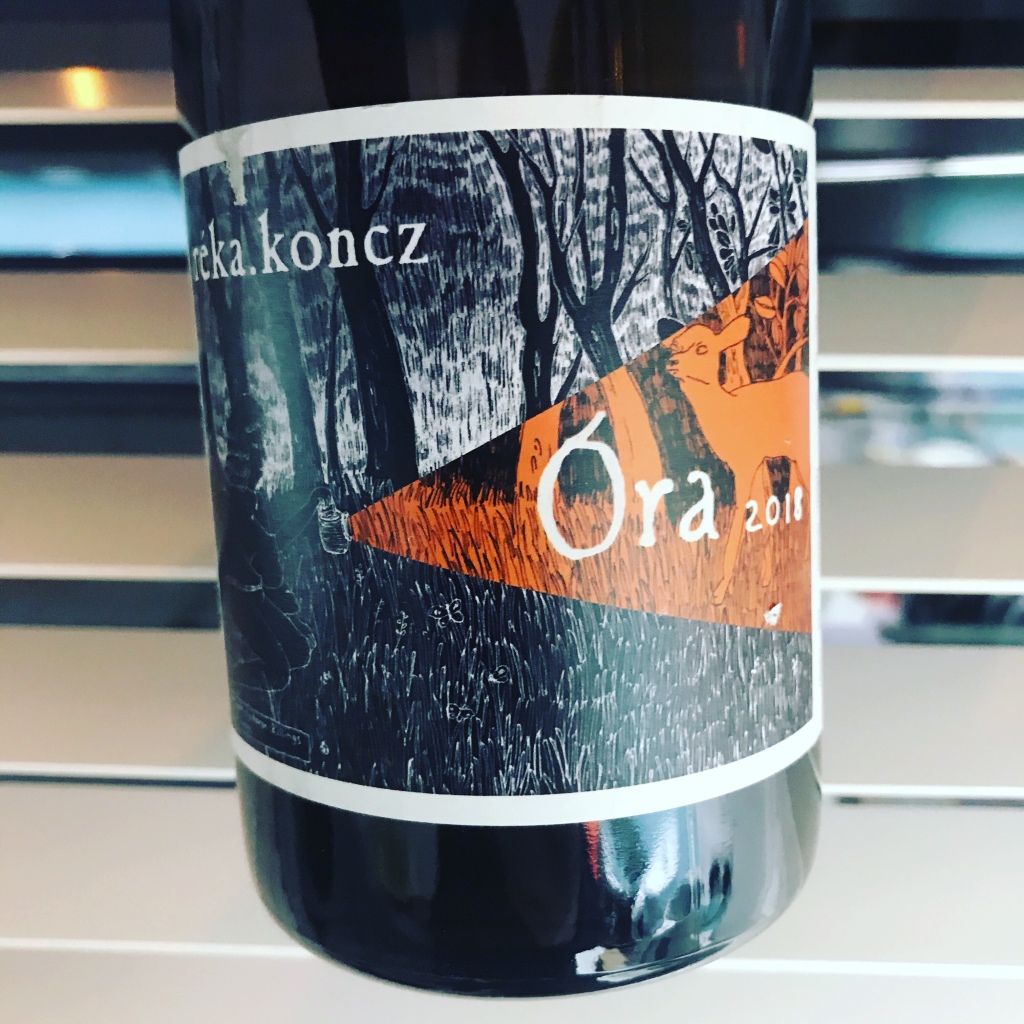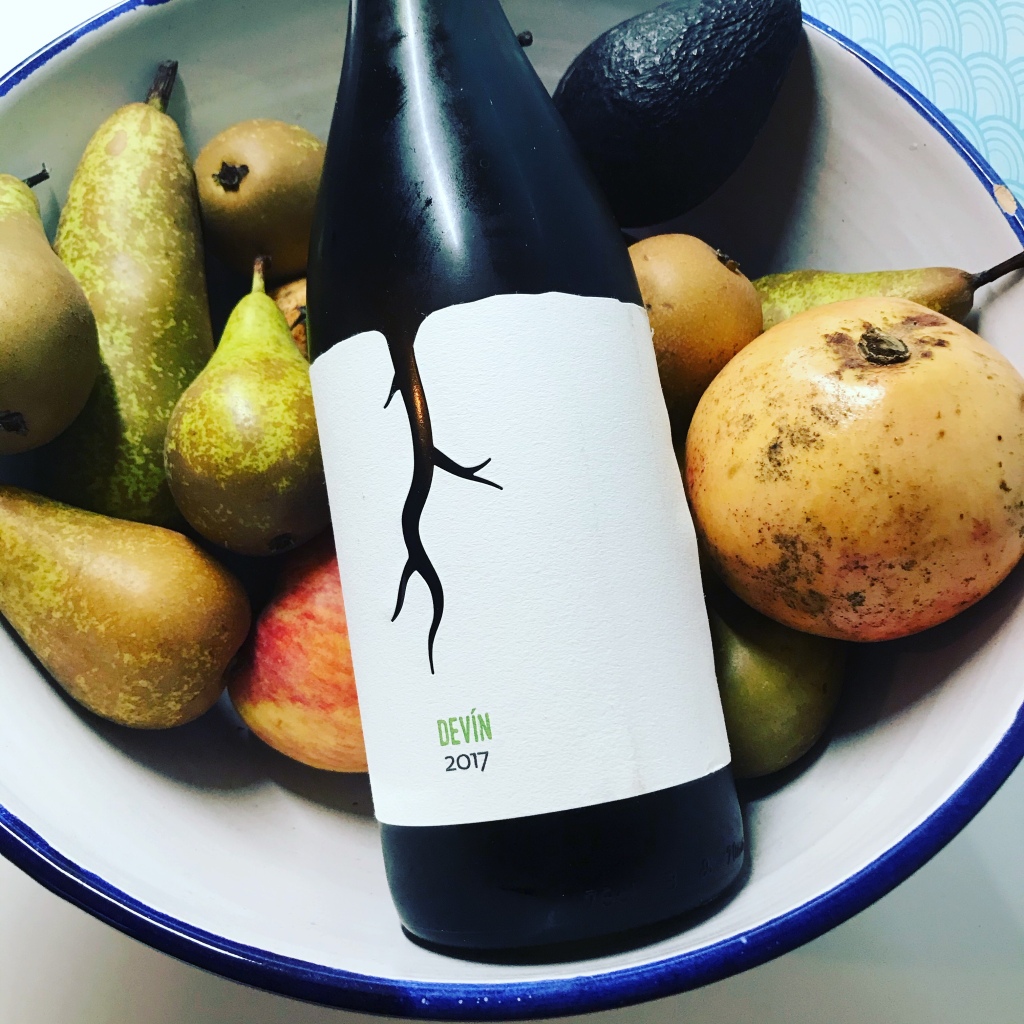November’s “Recent Wines”, the most interesting wines drunk at home last month, kicks off in Rust and a winemaker whose wines were among the first from Burgenland I drank. We then continue our journey via Sussex, Hungary, the Mosel and back to Burgenland, before we head over into Slovakia. We are then back in Sussex but for something completely different, before ending Part 1 in California.
JUNGE LÖWEN 2018, HEIDI SCHRÖCK (Burgenland, Austria)
Heidi’s old family cellars are situated right on the square in the beautiful town of Rust, right on the western shore of the Neusiedlersee. Whilst the focus these days is rightly on the younger generation of natural wine producers around the lake, we shouldn’t forget that there are a group of women who have been making biodynamic or low intervention wines around here for many years. These include Birgit Braunstein, Judith Beck, and of course Heidi Schröck.
Junge Löwen does what it says on the label. It’s a tasty drinking red under screwcap, a blend of 85% Blaufränkisch and 15% St-Laurent. It smells of bright dark fruits with a lovely smooth palate made interesting by a slightly mineral edge. It’s simple, but an excellent introduction to Heidi’s very pure wines, and great value. Although her reds step up from here, via Rusterberg and Ried Kulm, this is just as enjoyable in its own way for its accessible sappy fruit.
I’ve mostly bought Heidi’s wines from Alpine Wines over the years, apart from a few bottles purchased in Heidi’s cellars, but this bottle came from The Solent Cellar via Liberty Wines, who seem to have the three red wines mentioned and halves of her Beerenauslese.

CUVÉE MICHELLE MOREAU BRUT 2014, BREAKY BOTTOM (Sussex, England)
Breaky Bottom is kind of hidden away in the Sussex countryside south of the County Town of Lewes. The six-hectare estate, founded by Peter Hall when he planted a vineyard near Rodmell in 1974, is one of the longest-standing quality producers of English Sparkling Wine, and perhaps one of the few to make very good Seyval Blanc. This cuvée, however, is made from a more traditional blend of 70% Chardonnay, 15% Pinot Noir and Meunier.
“Michelle Moreau” (a poet, dancer, writer, inveterate traveller and a close friend of the Halls) is an award winning cuvée of just 6,736 bottles which at £35.50 is as much a hidden classic as the estate is hidden away in the folds of the South Downs chalkland. It’s bright and classy with a little bite of acidity, but it also shows that bit of bottle age which adds depth and complexity. I’m sure it will improve further, but it is drinking so well now. Sort of lively, but stately. I definitely want to get some more.
This comes from the estate via Brighton wine merchant The Butler’s Wine Cellar, which is something of a specialist when it comes to English (and Welsh) sparkling wine, whose owners have a close connection with the estate.

ORA 2018, RÉKA-KONCZ (Eastern Hungary)
Annamária Réka is too much of a regular in these monthly revues for me to go over her background yet again, as I work my way through my first batch from her range (after this one I have just one more of her wines currently in the UK to write about). She makes mostly wines from white grapes with differing degrees of skin contact in the very far east of Hungary, right up by the border with Ukraine. She will certainly get a mention in my Review of the Year in a few weeks.
Ora is a field blend based on a local and rare autochthonous variety called Királyléanyka, which Annamária is intent on keeping alive. The blend also contains some Rhine Riesling, Hárslevelü and Furmint (probably among others, as is the way with traditional field blends all over Central Europe). It sees a five-day maceration of destemmed grapes in open cask before finishing in tank.
The wine has some protecting C02 which makes it gently spritzy (not fizzy) on opening. I should warn that it was the most “cidery” wine I’ve tried from this producer, though I’d describe it as the best cider I’ve ever drunk. But it is a little out there. Within the context of what I’ve just said this was gorgeous, if for the more adventurous.
There are plenty of more straightforward (if that’s really a fair word to use) wines in the Réka Koncz range. They are imported by Basket Press Wines and you can check out these wines (and their whole range, from mostly Central Europe) at their popup shop throughout December, at 188A Hackney Road (almost opposite Sager + Wilde). See my article of 23 November for more details.

LITTLE RED RIDING WOLF [2019], JAN MATTHIAS KLEIN (Mosel, Germany)
JMK is the man behind Staffelter Hof and this is one of his Landwein, which sport contenders for the most modern and perhaps most exciting wine labels in Germany today. You’d hardly guess that some of these wines hail from the traditional vicinity of Kröv, on the most famous stretch of the Mosel. This red is made from Pinot Noir with zero added sulphur, equally unfined and unfiltered.
What hits you first is mouthfilling cherry fruit. That’s enough, although a little earthy texture makes the wine food friendly. At a balanced 12% abv it is truly gluggable, but it doesn’t seem light or lacking weight on account of that concentrated fruit. One of the best German reds for drinking bottle after bottle in an unashamedly natural wine style without an excess of funk.
Imported by Modal Wines.
INTERGALACTIC 2019, RENNER & RENNERSISTAS (Burgenland, Austria)
The Renner establishment is on the right-hand side of the road as you drive (or cycle in my case) into Gols coming from Neusiedl-am-See, at the top of the lake. Gols sits in the middle of vineyards which slope both above the village and below it, more gently down to the reed beds of the Neusiedlersee. The Renner revolution is well underway, and Stefanie and Susanne are now joined by brother Georg. Although their father, Helmuth, has been a noted producer of the serious “Pannobile” wines of the region, the three siblings are all well versed in the ways of natural wine production (the sisters trained with Tom Shobbrook and Tom Lubbe).
Intergalactic is a new wine in the range, a white field blend of Grüner Veltliner, Welschriesling, Gewurztraminer, Muscat Ottonel and Chardonnay. When I visited at the time of the 2018 vintage Stefanie told me how, having seen how their individual varieties perform on their own and getting to know them, their interest now really lies in creating the best possible blends.
This cuvée sees a little skin contact over four days before ageing on lees in old oak. It only shows 11.5% abv, which gives it a lightness, but at the same time there’s definitely something in the blend which adds a little plumpness or gras. The overall effect on the texture is very positive.
This wine is firmly in the unfiltered camp, so it really does need a day or two standing up, but it’s a glorious field blend. Planet Gols is taking us to the outer reaches of the furthest galaxies. Please don’t stop.
Renner & Rennersistas are imported by Newcomer Wines and are also available at littlewine.co , and I’ve bought this from both so I’m not sure which one this bottle came from.

DEVIN 2018, MAGULA (Sovakia)
Magula is among the best three or four producers I know in Slovakia, and is equally one of my favourites in the whole of Central Europe. It is a ten-hectare family estate (second generation) at Sucha Nad Parnou in Southern Slovakia. Biodynamic wines are made in a dry valley (hence the vine on the labels, forced to go deep) from loess soils with a high mineral content, especially calcium, which you will see clearly affects the flavour.
Devin is a local cross between Gewurztraminer and Roter Veltliner. It combines a texture somewhere between peach juice and olive oil but the bouquet and palate give fresh lime citrus and peach with hints of spices and a saline twist. It’s a lovely variety for anyone seeking something very different to what they may have tasted before, yet don’t want anything too out there. In some ways it reminds me a little of Viognier, but if you don’t like Viognier don’t be put off. Everything blends together nicely, so that the wine is neither complex nor simple (or maybe it’s both at the same time).
Another bottle from Basket Press Wines which you could pick up at the importer’s popup shop (188A Hackney Road) during December.

QVEVRI WHITE 2019, TILLINGHAM WINES (Sussex, England)
Ben Walgate’s change of direction, from running a well-known English Sparkling Wine specialist to artisan winemaker pushing the boundaries of English wine at its fringes, is proving to have been a good move. The myriad wines made just inland from Rye are all of interest, or should be, to anyone interested in (or writing about!) the wines of Great Britain. One of the most out-there decisions Ben made was to import a couple of qvevri from Georgia. More have followed, and his cuvées of qvevri wine and cider are among the most exciting crafted at Tillingham.
This cuvée is a blend of Bacchus and Pinot Blanc, from two separate qvevris, whole bunch pressed with four months on skins in the buried clay vessels. You’ll be pushed to find another wine like this in England. It’s very cloudy (wholly unfiltered) but it tastes remarkably clean with grapefruit freshness cutting through the palate. It’s a versatile wine too. You might think it a summery glass but the texture adds palatability with food, and we actually drank it with a spicy curry.
This bottle came from the shelves of The Solent Cellar but it’s worth remembering that the Tillingham shop is currently open from 10-4 on Saturdays during Lockdown (Dew Farm, Dew Lane, Peasmarsh), and presumably for longer after 2 December (check the web site). They sell the full Tillingham range on site, along with a great selection of other mainly natural wines from the restaurant cellar.

RIPKEN VINEYARD CILIEGIOLO 2018, KEEP WINES (California, USA)
The story of how Jack Roberts met his future partner, Johanna Jensen, on the Englishman’s first day in the USA is very romantic. Both moved into high quality wine making, Johanna with Abe Schoener’s Scholium Project and Broc Cellars, and Jack with Matthiasson Family Wines. Jack was Matthiasson’s vineyard manager until last vintage, when he finally felt able to devote all his time to his own family’s project.
Ciliegiolo is a little-known Tuscan variety, a minor component in Chianti, which has gained some recognition in recent years both in Maremma on the Tuscan Coast and in Umbria. Its name comes from the Italian for cherry, which pretty much explains the grape. Someone saw fit to plant some, whether deliberately or thinking it was something else, twenty years ago on the Sacramento River Delta. Jack and Johanna seem to have a passion for finding these less well-known varieties around wider Napa (I drank their delicious Counoise back in May), and every single time they get the very best out of them, as if they have a Midas touch.
The grapes are fermented in stainless steel with no stems. You get ripe, dark and zippy cherry fruit, concentrated but coming in at just 12.5% alcohol. This seems to make for perfect balance and maximum refreshment. A remarkably beautiful glass of alcoholic cherry juice which, if I dare say it, is the best Ciliegiolo I’ve ever drunk (and yes, I’ve had a few from Italy). Personally I would pick up any wine made by this pair.
Keep wines’ UK agent is Nekter Wines, a specialist in excellent under the radar Cali producers, as well as the likes of Matthiasson.



